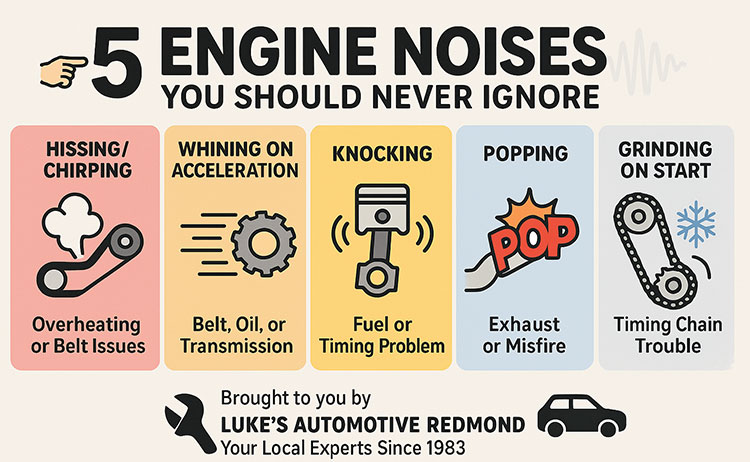Luke's Car Tips & Auto Maintenance Advice
Luke's posts regular blogs to offer you great information and advice about your car maintenance. Check back often for new posts. Search for a specific topic!
 Luke Shaff
Luke Shaff
"Why don’t Easter bunnies ever get hot in the summer?
Because they have hare-conditioning!" 🐰💨😄
Spring has officially sprung, and you know what that means—longer days, blooming flowers, and yes, a visit from everyone’s favorite bunny! 🐰💐 Whether you’re dyeing eggs, hiding candy, or just enjoying the sunshine, we hope your Easter weekend is filled with joy, laughter, and maybe a few chocolate-fueled sugar highs. No judgment here!
We’re so grateful for our amazing customers and community. Thank you for trusting us with your vehicles and keeping our little shop busy and buzzing. If you’re out and about this Easter weekend, drive safe and enjoy every minute of this beautiful springtime.
From all of us here at the shop - Happy Easter, and here's to sunny days ahead! 🌼

Your car talks to you—it just doesn’t use words. Instead, it sends warning signals in the form of dashboard lights, performance changes… and yes, strange noises. If your engine starts making a sound you've never heard before, don't turn up the radio—listen up! Some engine noises are early signs of trouble that can save you a ton in repairs if caught early.
Here are five engine noises that deserve your immediate attention:
1. Hissing or Chirping Under the Hood
If you hear a hissing or high-pitched chirping sound coming from the engine bay, that’s not a sound effect—it’s likely a sign something’s wrong. Common causes include:
Why it matters: Hissing sounds can indicate pressure escaping from your cooling system, which means your engine could be overheating—fast. Chirping often points to a worn belt, which, if it snaps, can leave you stranded.
2. Whining When You Accelerate
A steady whining noise that gets louder as you speed up is usually one of three things:
Why it matters: Minor issues like fluid levels are easy to fix—but if left alone, that innocent whine could turn into a costly transmission repair down the line.
3. Knocking or Pinging (Especially Under Load)
That rhythmic knock or ping you hear—especially when climbing a hill or accelerating—means something is seriously off inside your engine. Potential culprits:
Why it matters: Engine knock can quickly wear out internal components. If you ignore it, you could be looking at a full engine rebuild.
4. Popping Sounds from the Engine or Exhaust
Hear a popcorn-like popping noise? This could point to an issue with:
Why it matters: Popping isn't just annoying—it could mean your engine is burning fuel inefficiently, which can damage your catalytic converter or lead to worse performance.
5. Grinding or Rattling When Starting the Engine (Especially Cold Starts)
That unsettling rattle or grinding sound on startup—especially first thing in the morning—can be a sign of trouble with:
Why it matters: Timing chain issues can lead to catastrophic engine failure if not handled early. The good news? A mechanic can usually diagnose this quickly with the right tools.
✅ Don’t Wait—Get It Checked!
Strange engine noises are your vehicle’s way of saying, “Hey, I need a little help over here!” Waiting too long can turn a quick fix into a major repair.
At Luke’s Automotive Redmond, we’ve got the latest diagnostic tools to pinpoint exactly what's going on. With over 40 years of trusted service, we’re your friendly neighborhood experts for everything under the hood. Whether it's a loose belt, a tricky knock, or a mystery hiss—we’ve heard it all, and we’re here to help.
🛠️ Need a second opinion? Come by and let us take a listen.